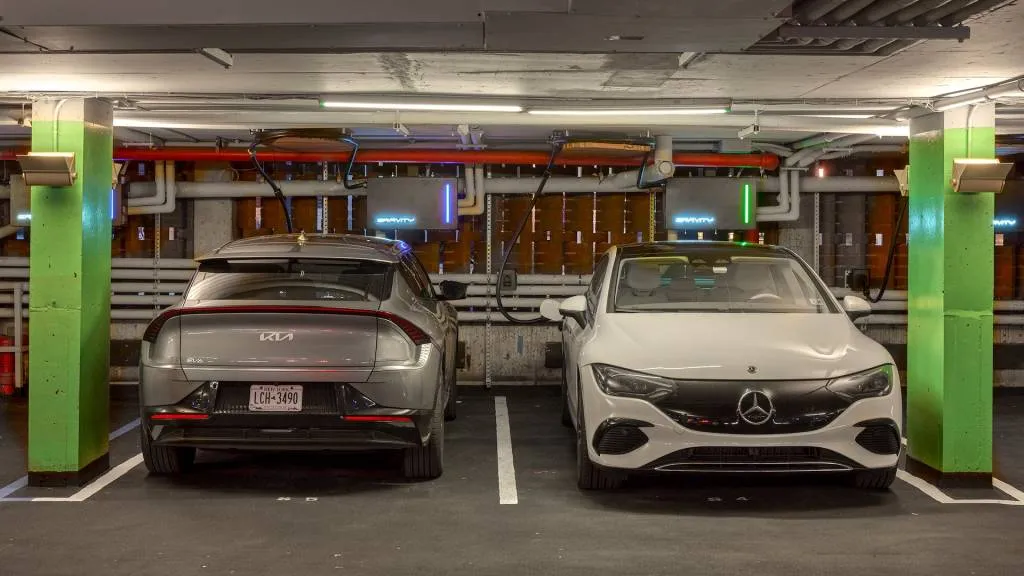When it comes to overall carbon emissions, EVs are cleaner than internal-combustion cars, but how much cleaner can depend on when they’re charged, according to a recent Bloomberg New Energy Finance blog post.
A grid more reliant on renewable energy will shrink the carbon footprint of EVs charging from it. Emissions associated with charging can vary due to a number of factors, BNEF notes—including the time of day.
An EV driver in California charging during daytime hours will produce half as many grams of CO2 per kwh as a driver who charges at night, according to BNEF, which expects the gap between daytime and nighttime charging to grow wider by the end of the decade.
Carbon emissions from daytime vs. nighttime charging (via Bloomberg New Energy Finance)
So while utilities currently incentivize nighttime charging with lower rates—largely an attempt to avoid surges in demand in the peak late-afternoon and early-evening hours—in the future they may want to switch to incentivizing daytime charging, during peak renewable hours, BNEF suggests.
BNEF also noted that most of the carbon footprint of an EV is associated with manufacturing, and that the breakeven point where emissions from manufacturing are cancelled out by avoiding “tailpipe” emissions from driving is shorter than ever. BNEF now estimates it at approximately 25,000 miles, or about two years of driving assuming average annual mileage.
That breakeven point also depends largely on the power generation mix for the grid you plug into, granted. But whether the average EV will reach it or not over its lifetime is no longer in question.

Gravity EV charging center in New York City
In the vast majority of the U.S., the Union of Concerned Scientists has pointed out, an EV produces fewer emissions than driving a 50-mpg gasoline vehicle. And electric pickups emit less CO2 than the average gas truck anywhere in the U.S., the organization has found.
It’s all but assured that the grid will keep getting cleaner, even despite some efforts within government to allow more carbon emissions. A 2022 ruling by the Supreme Court was at odds with U.S. infrastructure spending and may allow the generation mix of some utilities to get dirtier—although the EPA retains the power to regulate “criteria pollutants” that might make sources like coal increasingly cost-prohibitive.


